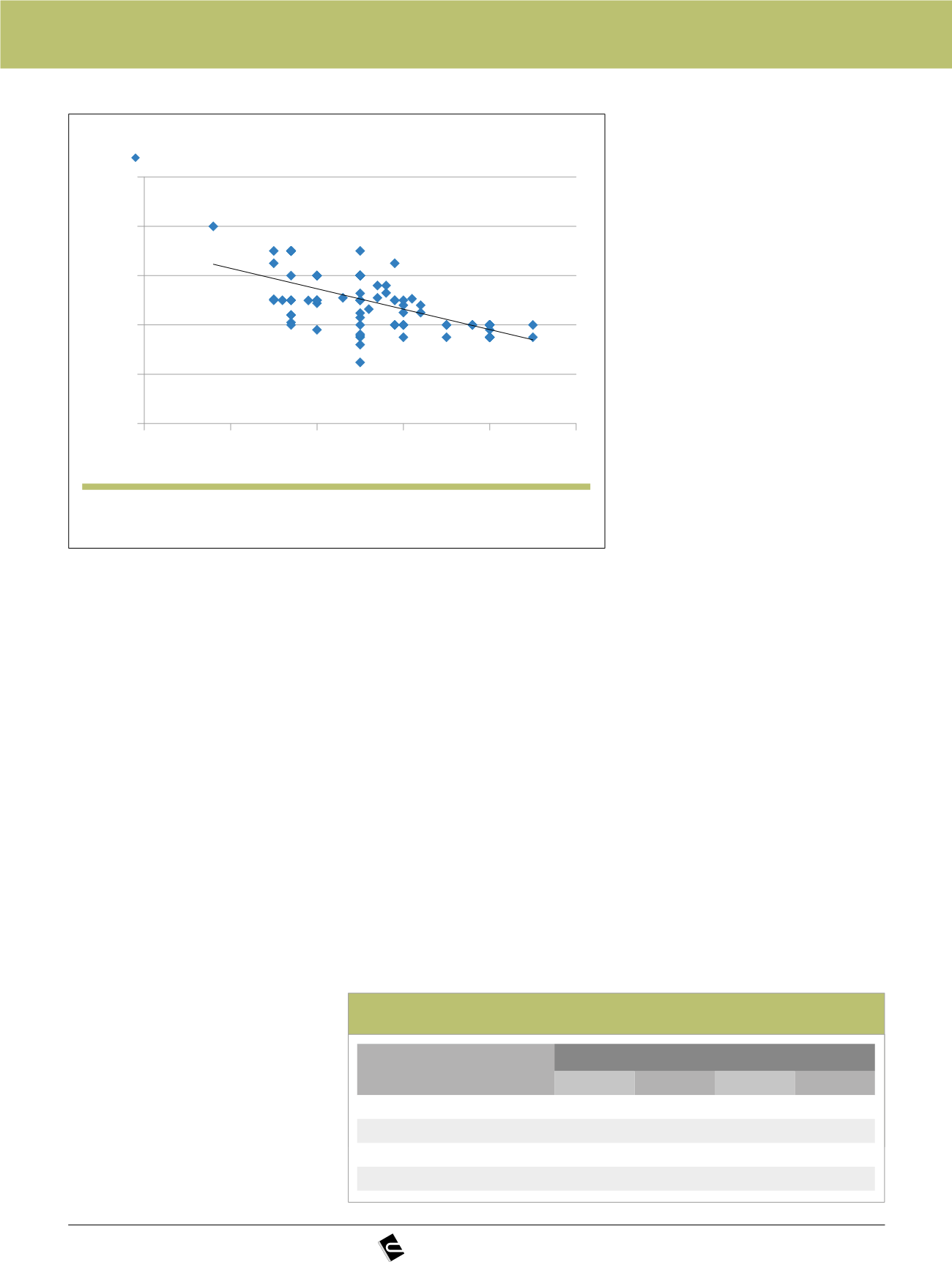
98 | CONCRETO & Construções | Ed. 91 | Jul – Set • 2018
Structural Concrete Code [6] in
2008. However, the weak point of
these models is the lack of calibration
beyond 30 years ago, when the
service life models begun to be
proposed. Therefore, the precision
of their predictions sometimes is
not good enough. Eurocode 2 on
concrete Structures [7] is being
revised by the European technical
committee on standardization CEN/
TC 250. This revision has promoted
the assessment of the most
common durability models. Also,
the fib Commission 8 on Durability
is undertaking some calibration
exercises within this context.
In addition to the probability of
failure, another commonly used
probabilistic parameter of safety is
the reliability index. Then, mentioned
assessment could be performed
by calculating the reliability index
with regard to the cover depth
defined in each exposure class
through the use of carbonation
models [8]. Thus, from the deemed-
to-satisfy-rules prescribed in EN
206 [9] carbonation rates were
ascribed and the reliability index
with respect to the reinforcement
cover is calculated. However, this
calculation lacks of proper testing
of the concretes because the rate-
determining input parameters of
the carbonation models were not
tested, but estimated. Given that,
a single value of carbonation rate
is assumed for each prescription
of water/cement ratio and cement
content. Therefore, this theoretical
approach could be conservative but
far from the actual performance [10].
As result, carbonation rate results
can be obtained in concretes with
the same water/cement ratio and
cement content.
In present paper the calibration
of deemed-to satisfy-rules is made
with a really tested set of more
than 60 types of concrete mixes
made in some locations all around
of Spain following the European
standards. From the carbonation
results, a mathematical analysis was
performed taking into account the
prescribed minimum concrete cover
in order to calculate the reliability
index and then, the safety level
offered by the current prescriptive
rules given by the European standard
EN 206 “concrete” [9].
2. EXPERIMENTAL
2.1 Concrete design
Some concrete mixes were made
in different ready-mix concrete plant
and research laboratories located
in several places all around Spain.
The cement content for the concrete
mixes (Fig. 1) was ranged between
275 kg and 500 kg, whereas the
water/cement ratio from 0.37 to 0.65.
These two parameters covered all the
concrete design mixes employed in
the country. All the concretes were
cured during 28 days in standardized
conditions (wet curing). Then, they
u
Figure 1
Relation between cement content and water/cement ratio of the concrete mixes
y = - 414,07x + 539,01
R² = 0,2862
100
200
300
400
500
600
0,2
0,3
0,4
0,5
0,6
0,7
3
Cement content (kg/m )
w/c ratio
Relation amount of cement – w/c ratio
relation amount of cement-w/c ratio – Linear (relation amount of cement-w/c ratio)
u
Table 1 – Exposure classes of EN 206 for carbonation
Parameter
Exposure class: carbonation
XC1
XC2
XC3
XC4
Maximum w/c ratio
0.65
0.60
0.55
0.50
Minimum cement content
260
280
280
300
Cover depth (for S4)
15
25
25
30
Compressive strength
C20/25
C25/30
C30/37
C30/37


